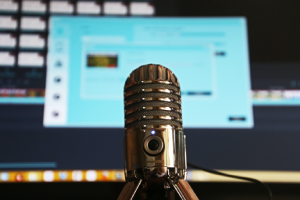Understanding Different Types of Microphones: A Comprehensive Guide

Having a thorough understanding of various microphone types is essential for recording high-quality audio in today's digital age, where content creation has become more and more important. You may substantially improve your audio output whether you're a podcaster, musician, content developer, or audio enthusiast by becoming knowledgeable about the subtleties and capabilities of different microphones. In this extensive study, we will delve into the world of microphones and examine their various functionality, uses, and distinguishing characteristics. So let's set out on this audio adventure and discover the mysteries of microphones!
1. Dynamic Microphones: Unleashing the Power of Durability
The durability and adaptability of dynamic microphones are well known. Due to their outstanding longevity and capacity to withstand tremendous sound pressure levels, these audio industry workhorses are frequently employed in broadcasting, recording studios, and live performances. You can precisely and clearly record strong vocals and musical instruments using a dynamic microphone. They are perfect for stage performances where ambient sounds might be overwhelming since they are excellent at isolating undesired background noise.
2. Condenser Microphones: Capturing Nuances and Elegance
The durability and adaptability of dynamic microphones are well known. Due to their outstanding longevity and capacity to withstand tremendous sound pressure levels, these audio industry workhorses are frequently employed in broadcasting, recording studios, and live performances. You can precisely and clearly record strong vocals and musical instruments using a dynamic microphone. They are perfect for stage performances where ambient sounds might be overwhelming since they are excellent at isolating undesired background noise.
3. Ribbon Microphones: Preserving Warmth and Vintage Vibes
With their rich history and distinctive sonic characteristics, ribbon microphones evoke a sense of nostalgia and vintage charm. These microphones utilize a thin metal ribbon suspended in a magnetic field to capture sound waves. Ribbon microphones are renowned for their smooth frequency response, natural warmth, and unique tonal qualities. They are often favored in recording scenarios where a vintage or classic sound is desired, such as capturing brass instruments, strings, and guitar cabinets.
4. Lavalier Microphones: Freedom and Flexibility of Movement
Lavalier microphones, also known as lapel microphones, offer unparalleled convenience and mobility, making them a staple in interviews, presentations, and video productions. These small, discreet microphones can be easily clipped onto clothing, allowing the speaker to maintain freedom of movement while ensuring clear and intelligible audio capture. Lavalier microphones are commonly used by broadcasters, public speakers, and content creators who require hands-free operation without compromising audio quality.
5. Shotgun Microphones: Focusing on Precision and Directionality
When it comes to capturing audio in highly directional situations, shotgun microphones excel. These long, tubular microphones employ interference tubes to enhance their directional capabilities. Shotgun microphones are widely used in film production, broadcast journalism, and outdoor recording scenarios where isolating the desired sound source from background noise is paramount. With their narrow pickup pattern and extended reach, shotgun microphones ensure crystal-clear audio even in challenging environments.
6. USB Microphones: Plug and Play Simplicity
Due to their ease of use and convenience, USB microphones have significantly increased in popularity in recent years. USB microphones are designed for simple plug-and-play operation with computers and mobile devices, negating the need for additional audio interfaces or mixers. They make a great option for podcasters.
- The Power of JBL Speakers: Unleashing the Ultimate Music Experience
- Choosing the Right Camera for Your Photography Style
- Understanding Different Types of Microphones: A Comprehensive Guide
- Choosing the Right Guitar: A Comprehensive Buying Guide
- The Benefits of Using Bluetooth Headphones in Everyday Life
